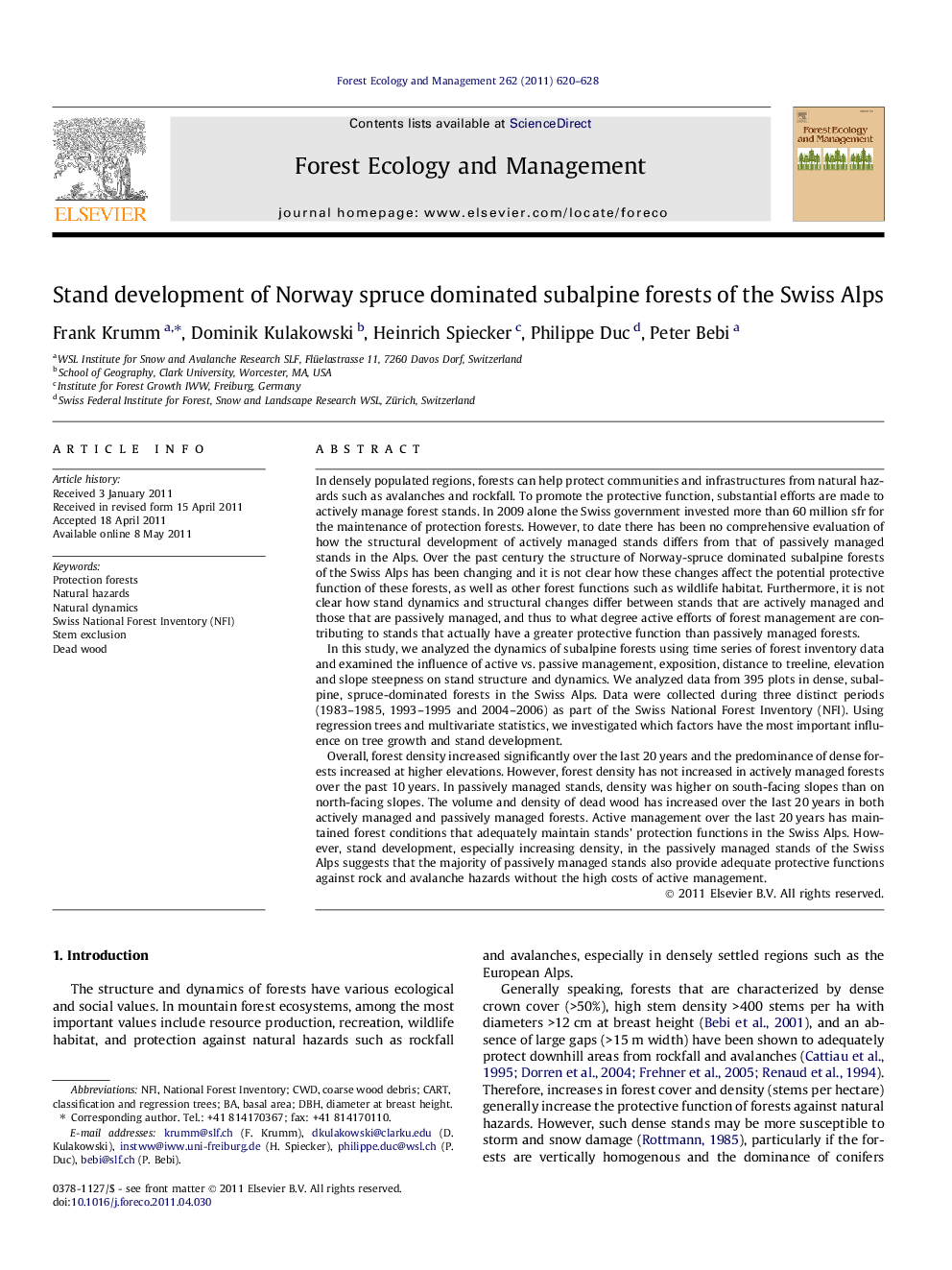| کد مقاله | کد نشریه | سال انتشار | مقاله انگلیسی | نسخه تمام متن |
|---|---|---|---|---|
| 88180 | 159288 | 2011 | 9 صفحه PDF | دانلود رایگان |

In densely populated regions, forests can help protect communities and infrastructures from natural hazards such as avalanches and rockfall. To promote the protective function, substantial efforts are made to actively manage forest stands. In 2009 alone the Swiss government invested more than 60 million sfr for the maintenance of protection forests. However, to date there has been no comprehensive evaluation of how the structural development of actively managed stands differs from that of passively managed stands in the Alps. Over the past century the structure of Norway-spruce dominated subalpine forests of the Swiss Alps has been changing and it is not clear how these changes affect the potential protective function of these forests, as well as other forest functions such as wildlife habitat. Furthermore, it is not clear how stand dynamics and structural changes differ between stands that are actively managed and those that are passively managed, and thus to what degree active efforts of forest management are contributing to stands that actually have a greater protective function than passively managed forests.In this study, we analyzed the dynamics of subalpine forests using time series of forest inventory data and examined the influence of active vs. passive management, exposition, distance to treeline, elevation and slope steepness on stand structure and dynamics. We analyzed data from 395 plots in dense, subalpine, spruce-dominated forests in the Swiss Alps. Data were collected during three distinct periods (1983–1985, 1993–1995 and 2004–2006) as part of the Swiss National Forest Inventory (NFI). Using regression trees and multivariate statistics, we investigated which factors have the most important influence on tree growth and stand development.Overall, forest density increased significantly over the last 20 years and the predominance of dense forests increased at higher elevations. However, forest density has not increased in actively managed forests over the past 10 years. In passively managed stands, density was higher on south-facing slopes than on north-facing slopes. The volume and density of dead wood has increased over the last 20 years in both actively managed and passively managed forests. Active management over the last 20 years has maintained forest conditions that adequately maintain stands’ protection functions in the Swiss Alps. However, stand development, especially increasing density, in the passively managed stands of the Swiss Alps suggests that the majority of passively managed stands also provide adequate protective functions against rock and avalanche hazards without the high costs of active management.
► We analyzed stand dynamics of subalpine forests using time series of inventory data.
► Forest density, regeneration and dead wood increased over the last 20 years.
► Managed forests have maintained forest conditions that maintain protection functions.
► Passively managed forests also provide adequate protection in the most cases.
Journal: Forest Ecology and Management - Volume 262, Issue 4, 15 August 2011, Pages 620–628